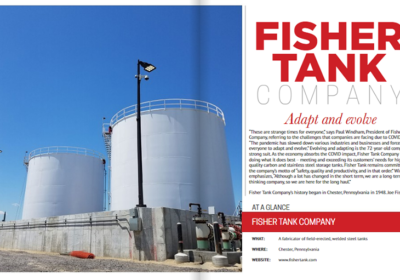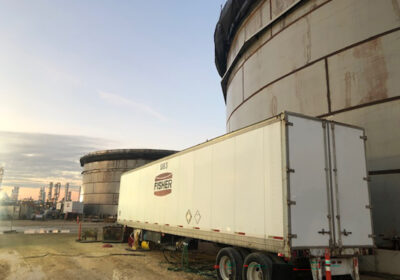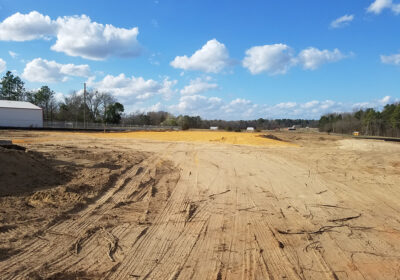3 WAYS STEEL IS AFFECTING THE COST OF FIELD ERECTED TANKS

As builders of field erected welded steel storage tanks, we here at Fisher Tank Company are always very interested in what’s going on with the prices of steel and with delivery times. We’re often working with projects that take months to get off the ground, and the availability of steel is a vital part of that planning.
Lately, steel prices have been going up, and the lead time for getting steel from the mills into our fabrication facilities has been increasing. These factors profoundly affect tank projects!
Today we’re talking to Dave Conley, our Director of Purchasing, to get some understanding of what’s going on with the steel market here in the US and how that impacts our work and our customers’ projects. Dave monitors information from the mills and the steel market in general, keeping us informed about market conditions as we prepare our proposals. Dave also monitors the availability of the carbon and stainless steel we use, helping us make accurate projects for our fabrication process and onsite delivery of tank components.
LR: Dave, you’re reporting longer lead times for delivery from the mills that produce the steel plate we use to build field erected tanks. What’s going on there?
DC: There are a lot of factors that have come together to cause the long lead times we’re seeing right now. This past winter had an enormous impact on our economy, and is still affecting us today. The weather slowed construction all over the country, causing both service centers and distributors to run very lean, with unusually low inventories. Now, with the overall broad-based feeling that the economy is improving, there’s a large demand for steel.
LR: So what is fueling that demand right now?
DC: Mills are currently filled with contract business for infrastructure projects and projects in the energy sector – things like bridge projects, wind mills/towers and pipe projects. Ship building is also improving, along with the rail car sector, which is showing strength thru 2016. In addition to that industrial activity, commercial and residential construction markets are showing an uptick in issued permits, which also adds to the demand for steel. All this means that there’s demand for steel and mills are still recovering from the low production/low inventories of this past winter.
LR: And with all this demand…..
DC: Prices are increasing! Everything I just described about current demands for steel, combined with the normal maintenance shut downs in a variety of industries, is creating the “perfect storm” for mills to capitalize on the high demand to increase prices. We have seen several prices increases from the mills in the last few weeks, and don’t expect that to change direction any time soon.
LR: What other factors are affecting the price and availability of material for our welded steel tank projects?
DC: Freight. All of this activity in the various sectors that use steel (and other major components of construction) has created a shortage in trucking. That means there is more freight to move with less available trucking, and that leads to higher freight costs.
LR: So what can our customers do to minimize the impact that higher steel and freight costs and longer lead times for steel have on their above ground tank projects and their bottom line?
DC: We’re doing our best to keep our customers informed about pricing and lead times. If there’s a project in the works right now, and a customer is holding off on “pulling the trigger” for one reason or another,” it’s important to consider the potential long term costs of waiting. An order for steel plate placed today would have a lead time of 14-16 weeks. That’s 14-16 weeks before we can get the steel into our facility and begin the process of fabricating, blasting and priming the plate to prepare it for field erection of the tank(s). Depending on when the tank needs to be in service, getting the material ordered asap may be crucial.
In some situations, using warehouse steel (steel held in inventory by a distributor) may be an option, but as inventory dwindles, that option may become less viable, and potentially even more expensive.
Secondly, price increases are coming. When we quote a project, we can hold the pricing for a limited amount of time, but we can’t protect indefinitely against increases in steel prices. Just like with longer lead times, if a new welded steel tank construction project is sitting on “go,” decision makers should be looking hard at the potential increased costs of waiting to move forward.
LR: Thanks for all the info, Dave. We look forward to hearing more from you on the Think Tank!
For more information about our tank construction services, please visit us at FisherTank.com.
Click here to read more of our blogs




